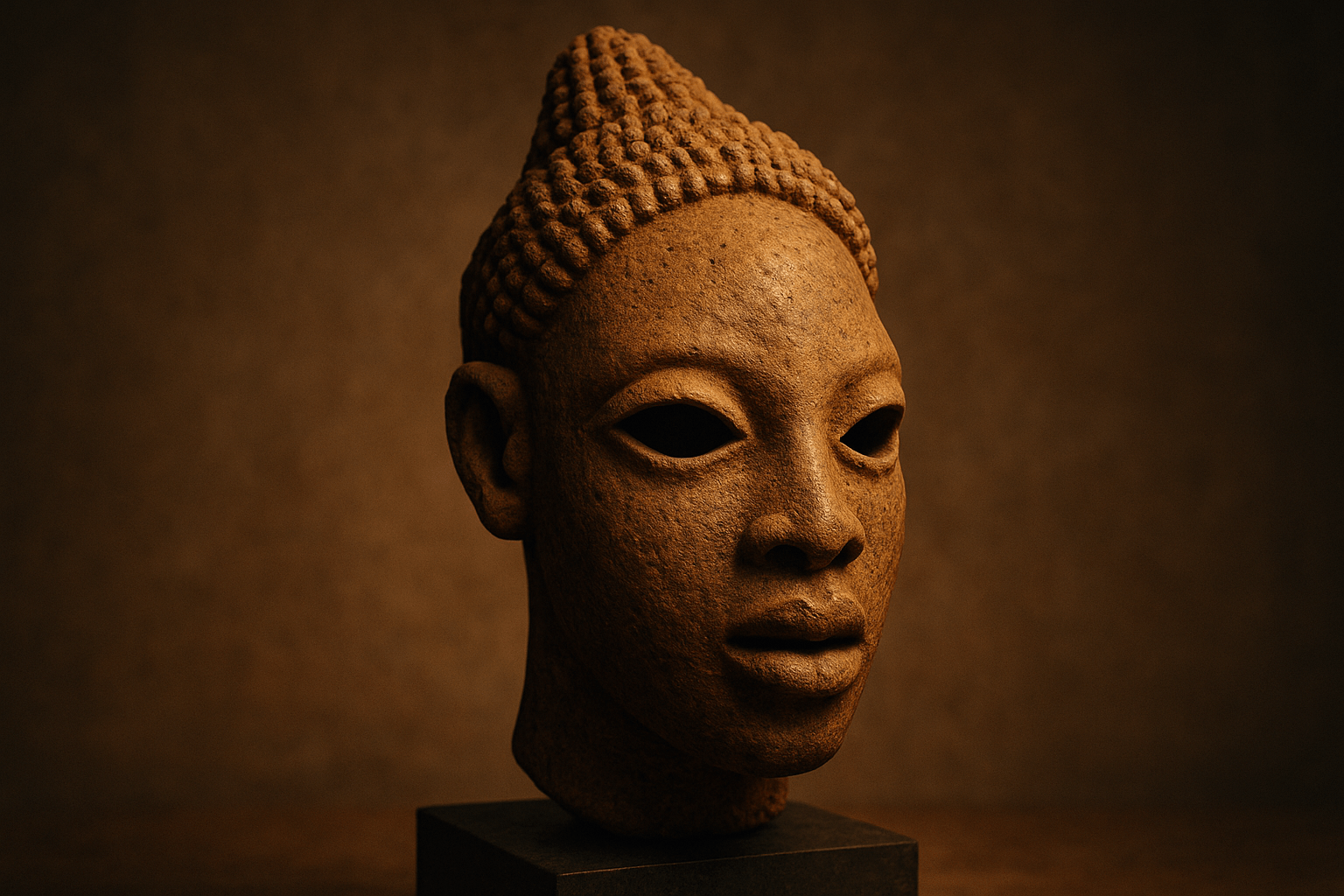Imagine a tin miner in central Nigeria in 1928, digging in the dusty earth near the village of Nok. He unearths a clay head, beautifully sculpted with triangular eyes and an elaborate hairstyle. Thinking it a curiosity, he takes it back to his camp and uses it as a scarecrow in his yam field. For five years, this masterpiece of ancient African art stood guard over the crops, its true significance unknown. This chance discovery was the world’s first-ever glimpse into the enigmatic Nok culture, one of sub-Saharan Africa’s earliest and most mysterious complex societies.
A Culture Unearthed by Chance
The scarecrow head might have been lost to history if not for archaeologist Bernard Fagg. In the 1940s, Fagg was shown the head and immediately recognized its unique style and sophistication. He began a systematic investigation, collecting other heads and sculpture fragments that miners were finding across a vast area of Nigeria’s Jos Plateau. He named the previously unknown civilization after the village where the first head was found: the Nok.
Radiocarbon dating of the terracotta and associated charcoal revealed something astounding. The Nok culture flourished from at least 1500 BC to around 300 AD. This discovery pushed back the timeline for sophisticated art and societal complexity in West Africa by centuries, revealing a civilization that thrived concurrently with ancient Greece and the New Kingdom of Egypt.
The Art of the Nok: Earthenware Portraits of an Ancient People
The most iconic legacy of the Nok is their stunning terracotta sculptures. These are not simple pots or figurines; they are highly stylized and expressive representations of human beings, and occasionally animals. Their key features are instantly recognizable:
- Elaborate Hairstyles: The figures sport incredibly detailed and complex coiffures, buns, and braids, suggesting that hair was a significant marker of identity or status.
- Distinctive Eyes: The eyes are typically triangular or semi-circular, often with perforated pupils, giving them a piercing, watchful gaze.
- Expressive Faces: With parted lips, flared nostrils, and subtly modeled features, the sculptures convey a range of emotions and a powerful sense of personality.
Most of the surviving pieces are near life-sized heads. Archaeologists believe these were once part of full-body sculptures, but the more fragile torsos and limbs have broken and eroded over the millennia. What was their purpose? Without any written records from the Nok themselves, we can only speculate. Were they portraits of revered ancestors, meant to be housed in family shrines? Were they grave markers for powerful leaders? Or perhaps they were ritual objects, used in ceremonies to ensure fertility, ward off disease, or bring a successful harvest. Whatever their function, their creation implies a society with enough stability and wealth to support a class of highly skilled, specialized artisans.
Forging a New Era: West Africa’s Iron Age Pioneers
As remarkable as their art is, the Nok’s technological prowess is equally revolutionary. Archaeological sites associated with the Nok contain not just terracotta fragments but also the unmistakable evidence of iron smelting: furnaces, slag (the glassy waste product of smelting), and tuyères (clay nozzles used to pump air into the furnace). This evidence shows that the Nok were among the earliest people in sub-Saharan Africa to master this complex technology.
What makes this particularly significant is that the Nok appear to have transitioned directly from the Stone Age to the Iron Age, seemingly bypassing the Copper or Bronze Age that characterized the development of many societies in Europe and the Near East. The ability to smelt iron ore—which requires temperatures exceeding 1,500°C (2,800°F)—was a monumental leap forward. Iron tools, such as durable hoes and axes, would have revolutionized agriculture, allowing for the clearing of dense forests and cultivation of tougher soils. This likely led to food surpluses, population growth, and the expansion of Nok settlements.
The Great Disappearance: A Vanishing Act
For over 1,500 years, the Nok culture thrived. They created magnificent art, built a complex society, and mastered a transformative technology. And then, around 300 AD, they vanished. The production of their distinctive art stopped. Their settlements were abandoned. The culture that had dominated the region for a millennium and a half disappeared from the archaeological record, leaving behind a profound mystery.
What happened to the Nok? Historians and archaeologists have several competing theories:
- Climate Change: A prolonged and severe drought could have crippled their agricultural base, leading to famine, social collapse, and forced migration.
- Resource Depletion: The massive scale of their iron industry would have required immense quantities of wood for charcoal. It’s possible they deforested their environment to such an extent that it led to soil erosion and ecological collapse, making the land unable to support their population.
- Disease: As societies become more settled and densely populated, they also become more vulnerable to the rapid spread of epidemics. A devastating plague could have wiped out a significant portion of the population.
It’s likely that a combination of these factors contributed to their decline. The Nok didn’t just disappear; their society likely broke apart, with survivors migrating and assimilating into other groups, carrying their knowledge and cultural traditions with them.
An Enduring Legacy
Though they vanished as a distinct cultural entity, the Nok’s influence likely echoed through the centuries. Some scholars suggest a direct artistic and cultural lineage from the Nok to the later, celebrated cultures of Ife and Benin, which also produced extraordinary metal and terracotta sculptures. The Nok are a powerful testament to the deep, complex, and innovative history of West Africa. They are a reminder that so much of our human story is still buried beneath the soil, waiting for the next chance discovery to bring it to light.
